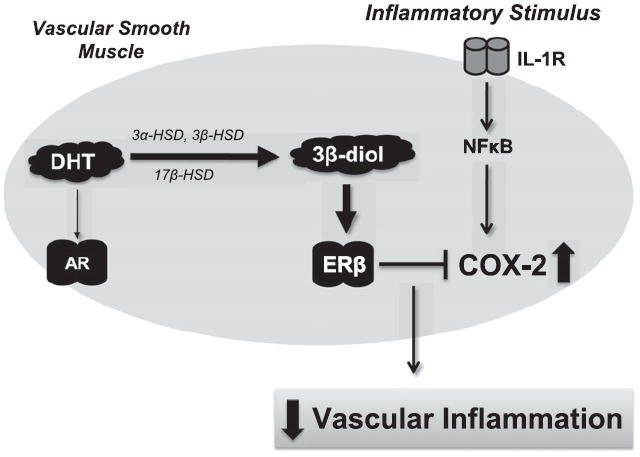Fig. 6.

Schematic diagram of proposed mechanism for DHT’s anti-inflammatory actions in vascular tissues. In our proposed model, during interleukin-1 beta (IL-1β) induced inflammation, dihydrotestosterone (DHT) reduces cyclooxygenase-2 (COX-2) expression via metabolism to 3 beta-diol (3β-diol) by the enzymes 3α-hydroxysteroid dehydrogenase (HSD), 3β-HSD, and/or 17β-HSD in vascular smooth muscle cells (thick arrow). 3β-Diol then activates estrogen receptor beta (ERβ) and down regulates COX-2 expression. Although DHT has the ability to bind with AR, it does not appear to down regulate COX-2 expression via this mechanism (thin arrow). AR (androgen receptor), IL-1R (interleukin-1 receptor), NFκB (nuclear factor kappa B).
